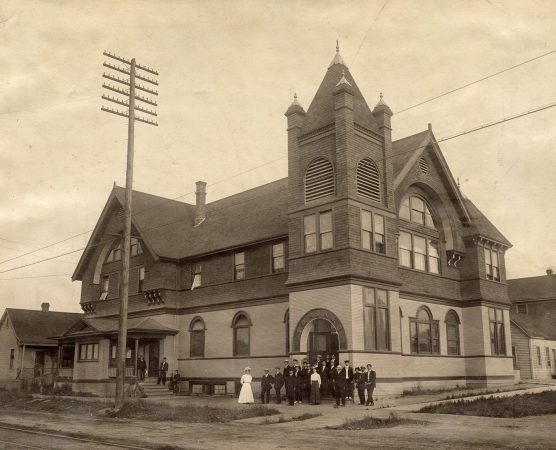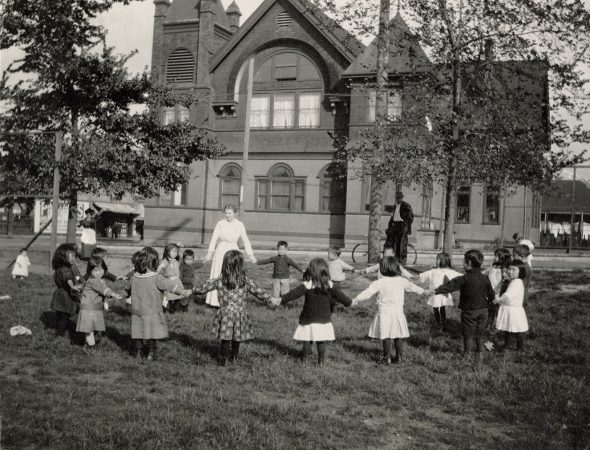
The Vancouver Japanese United Church once stood at the corner of Powell Street and Jackson Avenue.
An intriguing fact about the church is that it originated in the early 1890s from within the Japanese-Canadian community itself, rather than through mission work of the mainstream Christian church. The church provided an alternative to the Buddhist religion and, at that time, was a means for new Canadians to integrate within the dominant Canadian culture.
The congregation chose to become part of the Methodist Church in 1896, and had a large enough membership by 1906 to build a large wood frame edifice. That building would serve them well until the Second World War. In 1925, with church union, it became the Japanese United Church, but it was commonly known as the Powell Street Church.

Besides its obvious spiritual role for its members, the church provided many important social supports within the Powell Street community and beyond.
In 1920, the congregation added a gymnasium, which stood immediately adjacent to the church building on Jackson Avenue. In addition to the gym, the new building held an office, dressing room, bath and shower, pool, kitchen, and reading room. As intended, it was used not just by the Powell Street Church members but also by the wider community.

- From about 1910 on, the church ran a kindergarten, providing childcare and English language classes for pre-school children.
- The congregation operated a welfare depot during the Great Depression of the 1930s, helping families in dire poverty.
- In 1932, it opened a “Japanese Hospital and Clinic”—needed because public hospitals gave preference to Caucasian patients. The hospital helped drastically reduce the number of tuberculosis cases in the community, through early detection and education.

The Powell Street Church building itself became a comforting presence in the community.
Pastor George Takashima remembers attending the church with his family before the war. In an interview with Kimiko Karpoff in 2019, he recalled the role of the church in the community back in the 1930s:
Across Jackson Avenue from the church were the Powell Street Grounds, now known as Oppenheimer Park. The church’s kindergarten used it as a playground, and teachers often taught English through playground games.

What happened to the church building?
During the Second World War, when Japanese Canadians were unjustly uprooted and scattered throughout internment camps, the Vancouver congregation had to leave its building in trust to the wider United Church. For several years, the building was used primarily for storage and for welfare programs run by First United Church (located just two blocks away).
Once they were allowed to return to the coast (from 1949 on), the now much smaller Japanese congregation wanted to continue using the Powell Street Church. But the building had been left in disrepair, was still being used for storage, and was inadequate for worship.

Jean Kamimura came from Ocean Falls in 1942 and stayed in Vancouver prior to being transferred to the internment camp at Tashme (near Hope, B.C.) She attended the Powell Street Church Sunday school briefly, while awaiting transfer to Tashme.
When Jean returned to Vancouver after the war, she found a group of young second-generation Japanese-Canadians who wanted to connect through church services and social time. In this excerpt from a group interview of former church members, she describes how she found the Powell Street Church in the early 1950s.
In 1953, the United Church of Canada sold the building. The Japanese congregation had no say in its sale, nor did they benefit directly from the funds.

The property at Powell and Jackson is now home to the Vancouver Buddhist Temple; that community replaced the original structure with a new one in 1979.
Recognition, apology, and redress
In 2009, the United Church of Canada apologized to the Vancouver Japanese United Church for the sale of the building, and in 2018, it presented a redress payment of $500,000.

Some of the funds from the redress went toward creating this website, which tells their story through word, image, and interviews.
